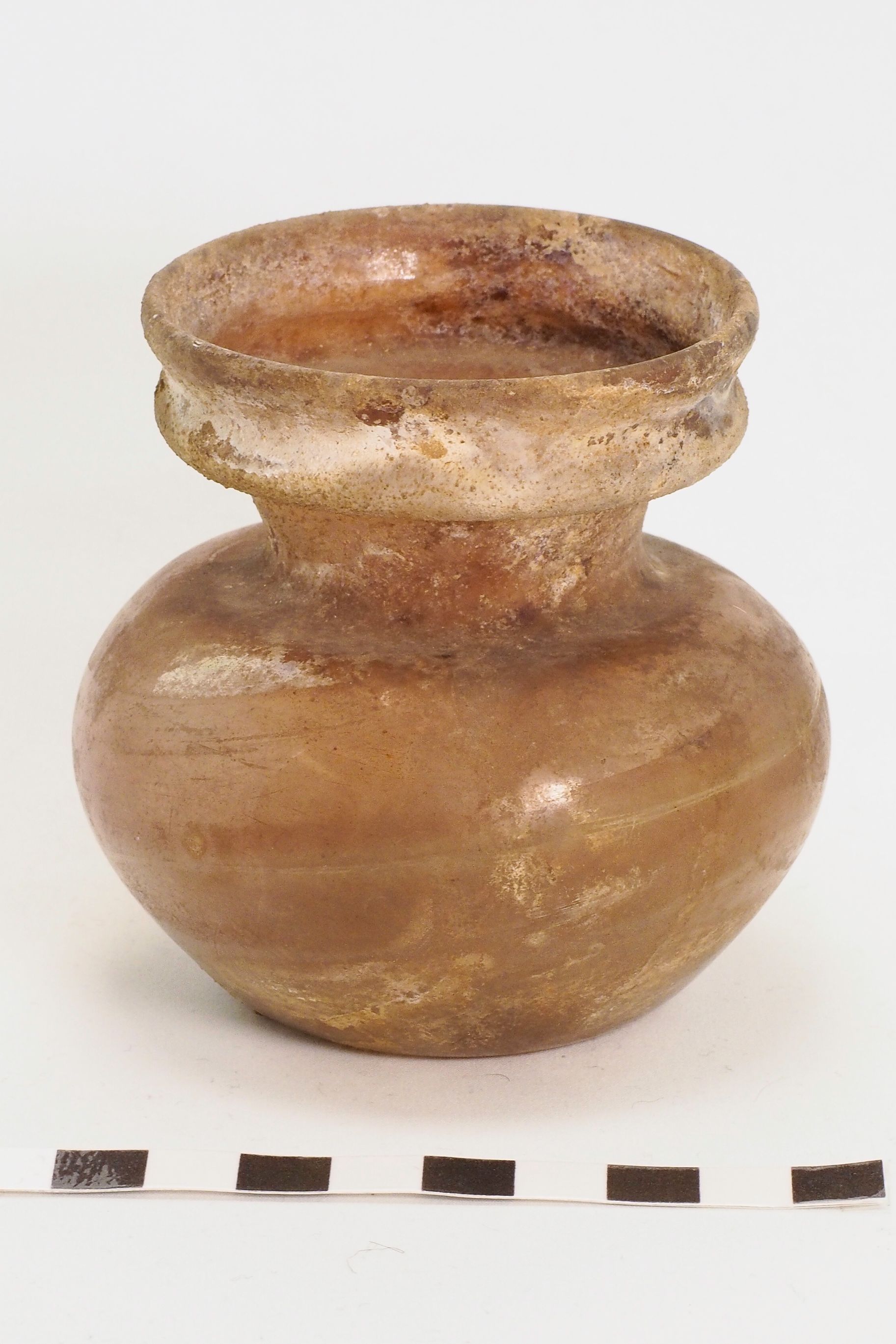Wide-Mouthed Jar
Name/Title
Wide-Mouthed JarEntry/Object ID
11NE-Mi56-192Description
The upright rim has a inward protruding tubular-flange which runs horizontally along its midpoint. The neck tapers, splaying at the bottom, creating a depression then merging with the shoulders. The rounded shoulders descend into the squat globular body which tapers to the base. The base is concave with a pontil mark. The vessel is intact with some encrustation and "189" painted in red to the bottom of the body.Use
Storage ContainerContext
The use of jars in antiquity was much the same as they are today, to store thick substances that are not easily pourable. Jars likely stored ointments which were cosmetic or medicinal in use. No lids have been discovered with jars; however, in the tomb of a dentist in Gadara (Umm Qais), Jordan, the rim of a jar preserved traces of cloth. Therefore, it is assumed that jars were closed with pieces of cloth or leaves which would have been tied beneath the mouth. It is thought that the depression created by the flange was design to help tie a covering over the mouth more easily.Made/Created
Date made
200 CE - 400 CETime Period
Roman Imperial, Late AntiqueEthnography
Culture/Tribe
Near Eastern - Syro-Palestine

